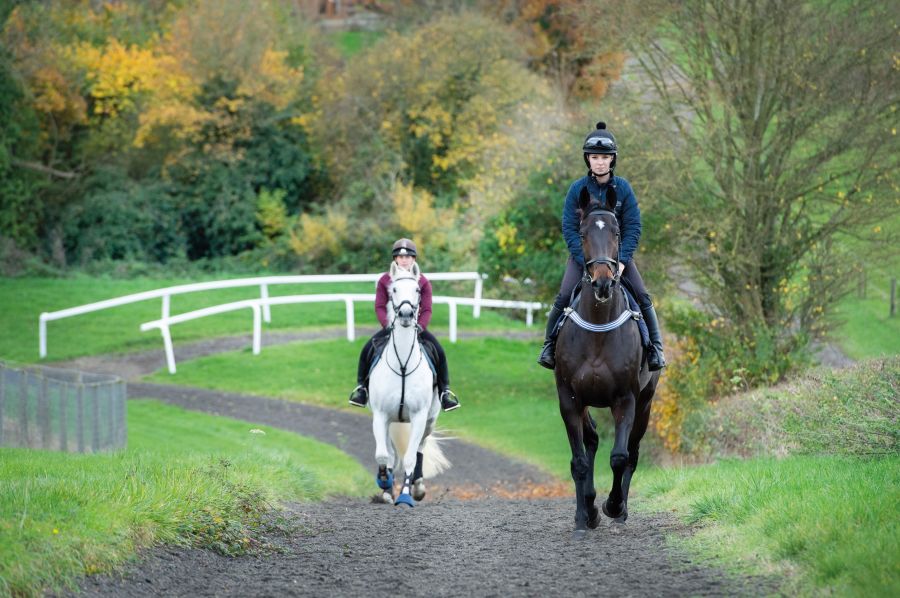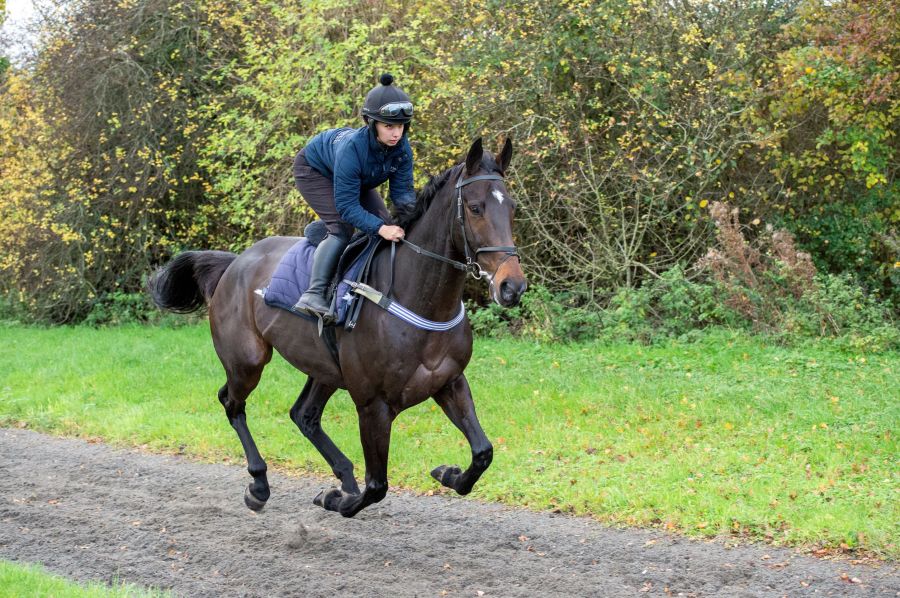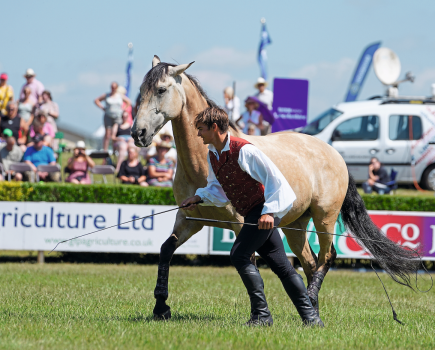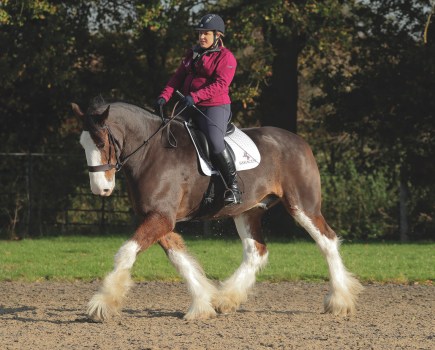Riding on the gallops isn’t just for racehorses and competition horses, it’s great fun and a useful exercise session for every horse and rider, regardless of breed, height and age of horse or pony.
Galloping isn’t mandatory; make the most of the surface and hone your session length and speed to best suit you and your horse. After all, variety is the spice of life and finding different ways to train our horses and keep fitness work interesting isn’t always easy when riders only have access to the arena and roads.
“Riders are often put off by the word ‘gallops’ because they associate it with racehorses and having to go flat out, but the speed you go is entirely up to you, and there are lots of different ways to use them,” says Sue Hurford, senior lecturer at Bridgend College and a BHS Level 5 equine business manager.
Here are seven reasons to take your horse to the gallops, and why you’ll both benefit from doing so.
1. Boost fitness
Gallops are excellent for getting a horse fit and maintaining their fitness.
“You can gradually build up the distance and time, as well as increase the pace, starting in walk and building up the trot and canter work,” says Sue.
“You can also introduce interval training, monitoring their recovery from fast work. Gallops are the perfect opportunity to use a heart monitor because you can work out your distance.”
“Once a week is plenty for the vast majority of horses, but those aiming for events requiring a higher level of fitness such as racing or eventing will be using them much more frequently,” adds Robyn Cherry, yard manager at Tyre Hill Equestrian.
2. Achieve a more forward thinking horse
Gallops are also useful for horses that hug the fence in the school.
“I do lots of flexion and counter flexion, shoulder-in, travers, playing with the paces (so adding in some medium or extension, and some collection), leg yielding back and forth as I’m riding on the gallops, and anything to keep the horse focused and make the ride more interesting,” says Robyn.
“I taught my horse his flying changes on the gallops because we couldn’t stay straight in the school and he was getting stuffy and backward. He was more forward-thinking on the gallops, so he mastered the beginnings of his tempis in a straight line.”
3. Calculate your horse’s speed
Because you know the distance of the gallops, you can also work out your galloping speed for cross-country.
“For event riders, it’s good for measuring your gallop time to work out metre per second to help meet the time cross-country,” says Sue.
“Gallop over a certain distance and have it timed to work out how fast your horse is going. It’s a great way for getting the rider used to the set speed required for competition.”
4. Rehabilitation
“The gallops are excellent for all horses, even those recovering from injury or surgery. Having a consistent surface to ride on is really important in preventing injury,” explains Robyn.
“Our gallops [at Tyre Hill Equestrian] are fantastic as we have the variety in terms of incline — we have a short and sharp hill plus a slow and steady incline on the big gallop.
“We use them to long-rein rehab horses as the surface is consistent, which is ideal for a horse coming back from injury, and we can use the hills to work them safely and in a contained way, without the weight of a rider.”
5. Different surfaces (cross-training)
Another big benefit of riding on the gallops is that, depending on the surface, they are rideable up to -30°C.
This means they are a reliable surface during the winter months when some arena surfaces freeze, as well as during the summer when the ground is rock hard.
Remember, though, that while a consistent surface is fantastic for horses coming back from injuries — and when the ground is either too wet, frozen, or too dry for fast work — working on varied terrain is necessary for sound horses.
“Horses must learn to travel over different ground and adjust themselves accordingly,” advises Robyn.
“Always working on perfect going isn’t ideal for horses’ tendons and ligaments in the long term and the day you have to gallop across a grassy field you’ll notice a big difference if you’ve only ever done fast work on a surface.
“Be careful and ensure you mix it up to keep your horse’s legs strong, and to teach them to adjust to varying terrain.”
6. Long, straight lines — great for youngsters and veterans
Riding in straight lines is beneficial for older horses with joint problems that can’t go round and round in circles in an arena, and for those recovering from injury.
For young or inexperienced horses, gallops are a safe way to introduce them to open spaces and hacking out without the worry of traffic on the roads.
“They’re also good for breakers [horses being broken to ride] to get them going forward within a safe situation,” adds Sue.
“It’s also a nice way to get off the roads, which are busier and more dangerous these days. If you have to ride in reduced light in winter, it is much safer than riding on the road as there’s no traffic.”
7. Safe place for novice riders
“The gallops can be a safe environment for riders to develop a light seat for when riding in open spaces, and improve their balance going up and downhill,” states Sue.
“It is also ideal for improving a rider’s fitness, as riders can take up a light seat and practise standing up in the stirrups, which uses different muscles.”

Riding on the gallops: How to stay safe
Before you head out to your nearest track, there are certain things you should keep in mind in order to keep both you and your horse safe.
1. Vary where you change the pace
A horse who is repeatedly asked to canter or gallop in a certain place will quickly learn this habit and come to expect it, possibly leading to excitable/unruly behaviour.
“If you have regular access to gallops, the biggest thing to remember is not to do the same thing in the same place every time. The last thing you want is a horse that says, ‘We always canter here’ and starts flinging himself around,” explains Robyn. “Rather, keep it varied so that your horse is sensible walking along the gallops and knows that you will tell him when it’s time to pick up the pace.”
2. Give others space
“Don’t go galloping up behind someone, as this can cause serious accidents,” adds Robyn.
3. Safety gear
“Some horses can get excited on the gallops, so it’s advisable to put a neck strap on. Of course you’ll wear a hat, but also consider using a body protector, brushing boots and gloves,” advises Sue. “It’s also important that you have adequate control in terms of your horse’s bit, and that your tack fits correctly.”
4. Work on both reins
“Also, when working on straight lines, make sure you’re working on each canter lead and trot diagonal equally,” adds Sue.
5. Don’t overdo it
Sure, it’s good fun, and your horse might feel keen, but if they’re not fully fit, you’ll want to limit how much fast work you do and not push them too hard in order to avoid injury.
6. Warm up and down
As with any other hack or schooling session, start slowly and gradually pick up the pace as your horse gets warm. If he’s going to find it exciting, you might need to go for a hack first. Remember to let him cool down thoroughly and catch his breath on a long rein at the end too.









